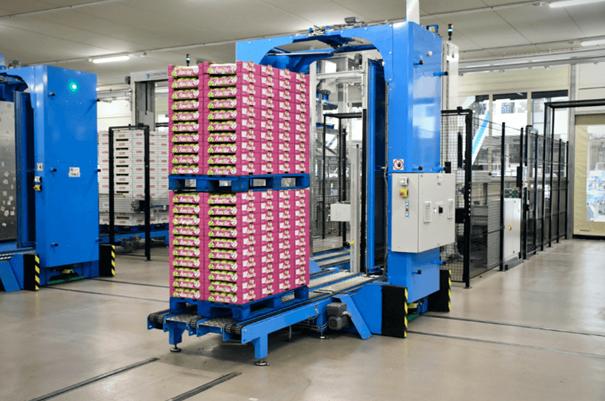Stacking is an essential part of storage, and proper pallet stacking can save a lot of space and time during handling and transportation of goods. However, there are safety rules that need to be followed to prevent a collapse of a several-meter-high stack of goods. Therefore, in this article, we will focus on safe stacking height, regulations, and pallet stacking systems.
Pallet stacking regulations
Stacking is an essential part of pallet storage, with different types of pallets having their specific characteristics such as composition, load capacity, or strength. Therefore, different stacking rules apply to each type of pallet. To ensure the safety and stability of stored goods, it is necessary to adhere to certain limits, which should be clearly stated in the documentation for each pallet.
Safe pallet stacking height
The stacking height indicates the maximum height of the stack measured from the floor to the top edge, which can be up to 8,000 mm. For example, for EUR pallets, the standard pallet stacking height is 6,000 mm, which corresponds to a maximum of five layers in one stack.
Similarly, there are stacking heights for other pallet dimensions:
- For pallets with dimensions of 600 x 800 mm, the standard height is 2,000 mm (up to four layers in a stack).
- For pallets with dimensions of 800 x 1200 mm, the standard height is 5,500 mm (up to four layers in a stack).
The stack height must be such that a safe distance of at least 200 mm is maintained between the top edge of the handling unit and the bottom edge of the ceiling structure.
Maximum stacking load capacity and tilt
When stacking pallets, you must not forget about the load capacity and tilt. The stacking load capacity represents the maximum permitted weight that can be placed on a given handling unit, such as a pallet, crate, box, or container.
Standards for safe stacking also specify the maximum allowable tilt—2% of the stack height. If a greater tilt occurs, it is necessary to realign the stack or completely dismantle it to prevent collapse.
What needs to be followed?
To ensure the safety of pallet stacking, it is important to follow some additional rules. For example, to ensure the stability of the stack of handling units (pallets, crates, containers, etc.), you do not have to use ropes, supports, or mutual leaning. However, you can use various constructions that are intended for this purpose.
When stacking handling units, it is also necessary to respect the predetermined dimensions of the handling aisles and ensure the correct insertion of the forks of handling equipment into the loading openings of pallets, containers, and others.
How to stack pallets effectively?
Stacking represents one of the most commonly used methods of storage, where pallets and goods are systematically arranged in layers on top of each other. It’s an efficient way to optimize storage space utilization while ensuring easy access to individual items.
To assist you in pallet stacking, a special online tool can be helpful. Using a pallet stacking calculator, you can easily determine how many pallets will fit into your storage space. Simply input the dimensions of the load and pallet details, and the calculator will visually display the entire load and calculate utilization for you.







